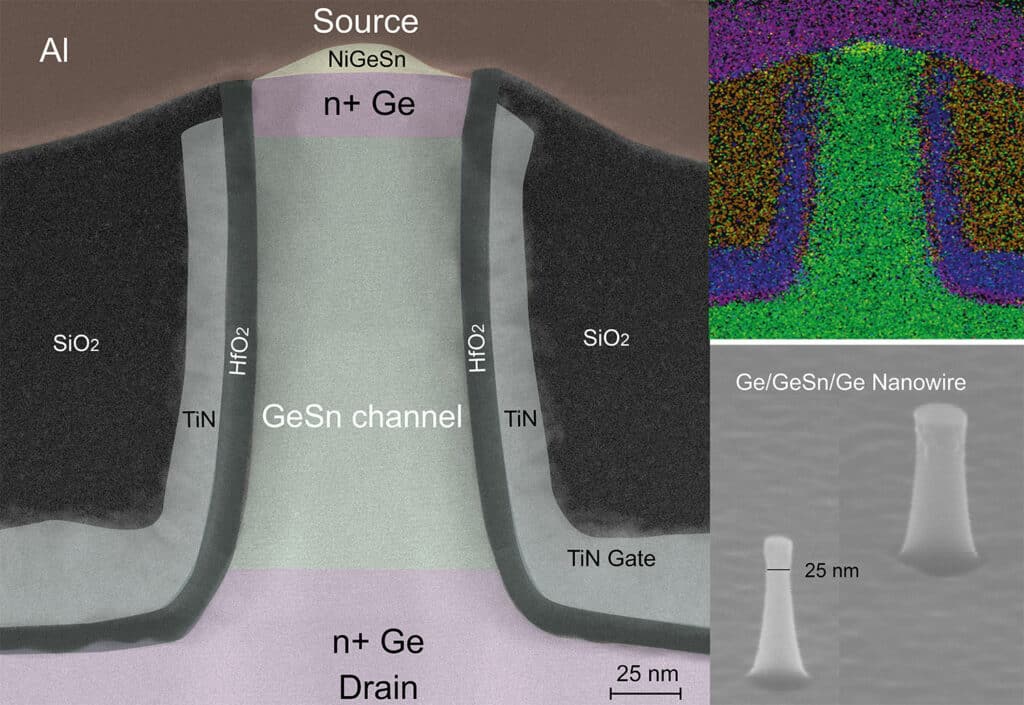The continued downscaling of silicon CMOS (complementary metal-oxide semiconductor) technology presents challenges for achieving the required low power consumption.
While high mobility channel materials hold promise for improved device performance at low power levels, a material system that is compatible with silicon technology and can be readily integrated into existing fabrication lines is required.
Researchers at Forschungszentrum Jülich have fabricated a new type of transistor from a germanium-tin alloy that has several advantages over conventional switching elements.
The germanium-tin transistors have a high potential for the computers of the future. Apart from classical digital computers, quantum computers could also benefit from the germanium-tin transistor.
Germanium was already being used in the early days of the computer era. Electrons can move much faster in germanium than in silicon, at least in theory. Now, researchers have optimized the electronic properties even further by incorporating tin atoms into the germanium crystal lattice.

“The germanium-tin system we have been testing makes it possible to overcome the physical limitations of silicon technology,” says Qing-Tai Zhao of the Peter Grünberg Institute (PGI-9) at Forschungszentrum Jülich.
In experiments, the new germanium-tin transistor showed an electron mobility that is 2.5 times higher than a comparable transistor made of pure germanium. Additionally, the new material alloy is compatible with the existing CMOS process for chip fabrication. As germanium and tin belong to the same main group in the periodic table as silicon, the germanium-tin transistors could be integrated directly into conventional silicon chips.
The germanium-tin transistor is a further step towards optical on-chip data transmission. The transmission of information with light signals is already standard in many data networks because it is considerably faster and more energy-efficient than data transfer via electrical conductors. In the field of micro- and nanoelectronics, however, data is usually still sent electrically.
Colleagues from the Jülich working group of Dr. Dan Buca have already developed a germanium-tin laser in the past that opens up the possibility to transmit data optically directly on a silicon chip. The germanium-tin transistor and these lasers provide a promising solution for the monolithic integration of nanoelectronics and photonics on a single chip.
Journal reference:
- Mingshan Liu, Yannik Junk, Yi Han, Dong Yang, Jin Hee Bae, Marvin Frauenrath, Jean-Michel Hartmann, Zoran Ikonic, Florian Bärwolf, Andreas Mai, Detlev Grützmacher, Joachim Knoch, Dan Buca, Qing-Tai Zhao. Vertical GeSn nanowire MOSFETs for CMOS beyond silicon. Communications Engineering, 2023; DOI: 10.1038/s44172-023-00059-2
